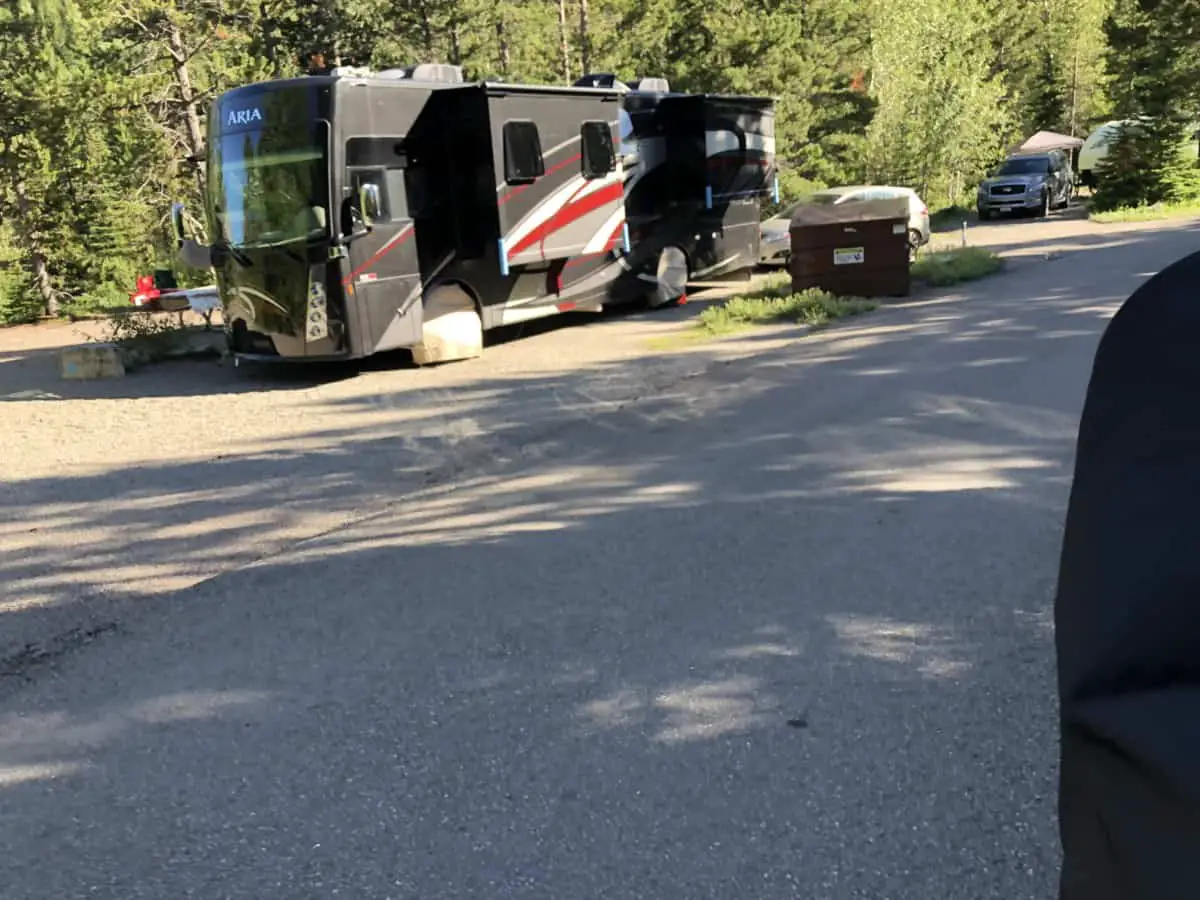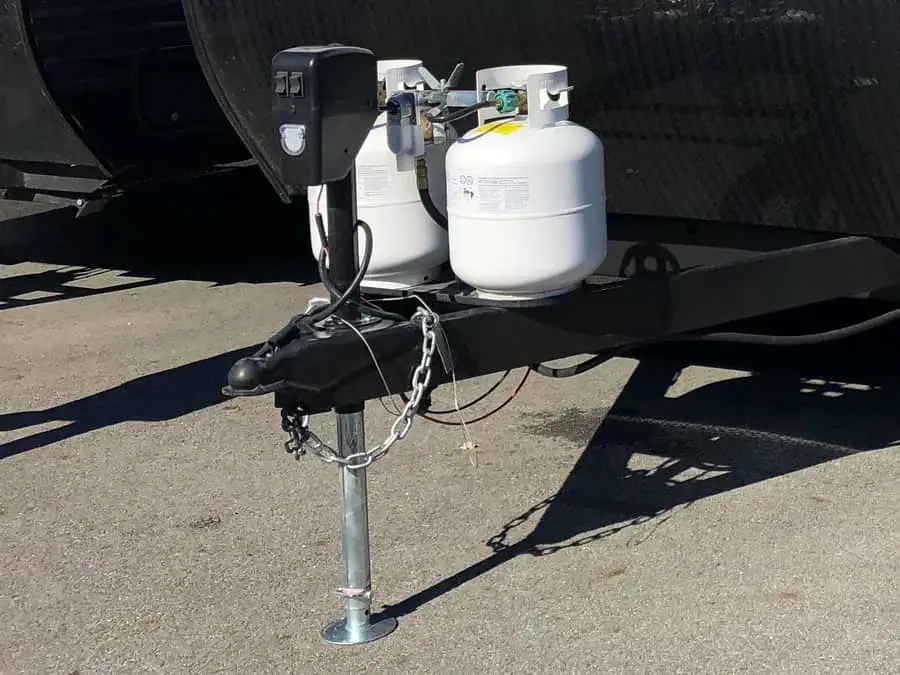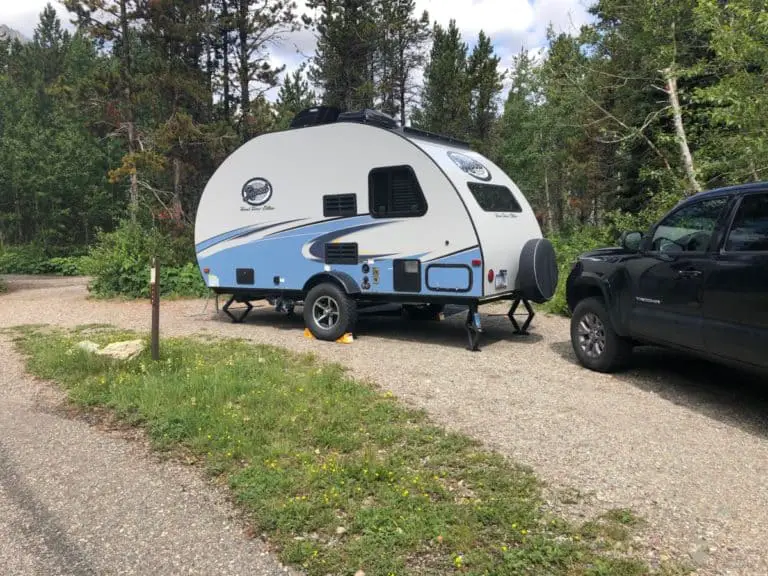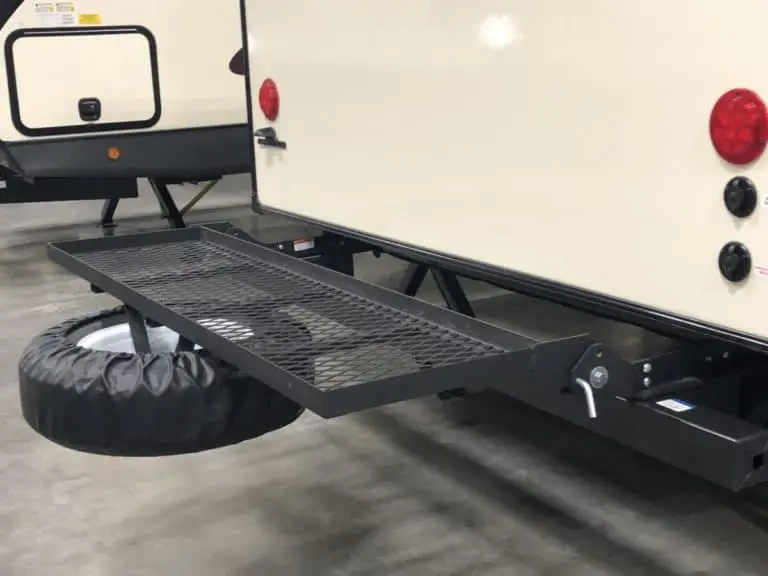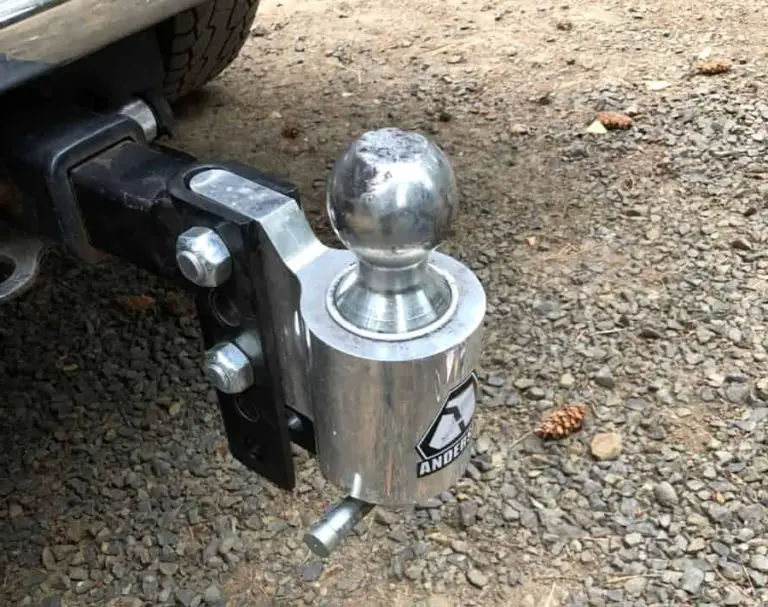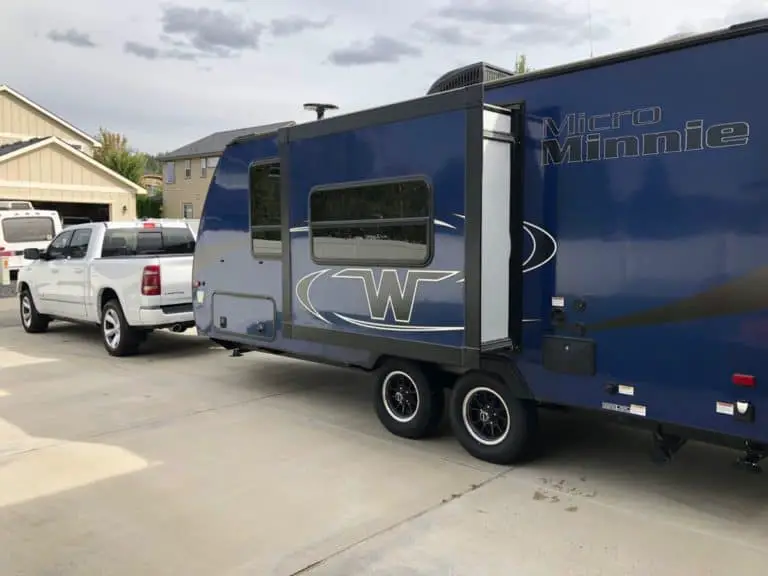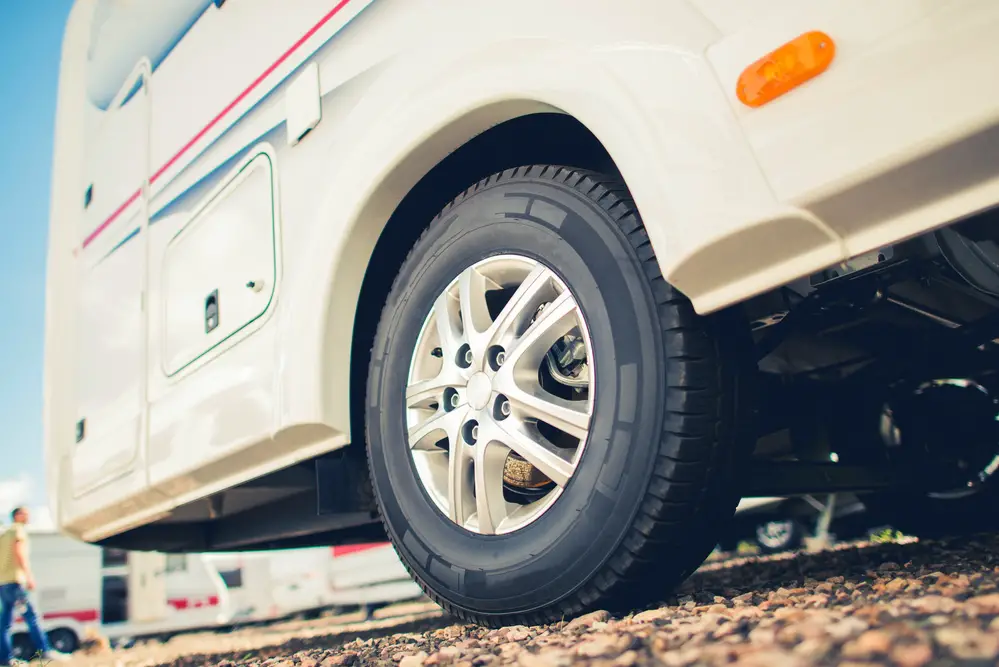How much can an RV tow? With examples
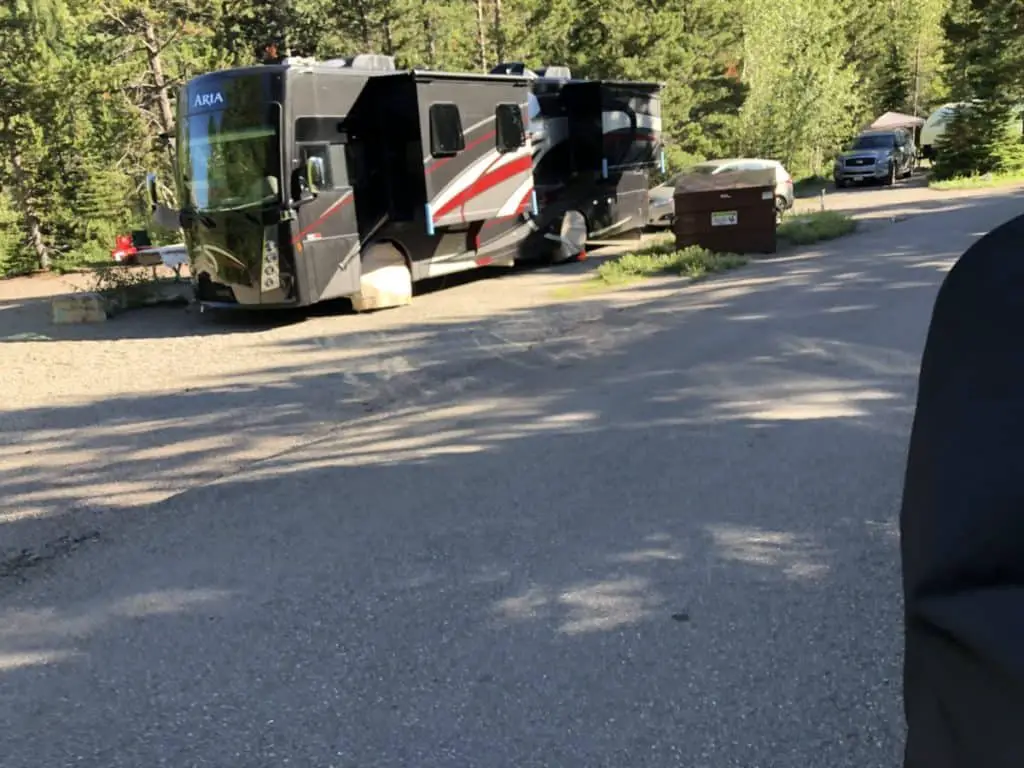
Knowing your RV’s towing capacity is essential to getting the most out of your vehicle and your outdoor adventure. What and how you tow greatly depends on the type of RV that you own.
How much can an RV tow? In general, a Class A RV can tow up to 15,000 pounds, a Class B will tow around 5,000, and a Class C can tow approximately 10,000 pounds. These numbers will also depend on specific towing packages, engine packages, and taking into account the weight of items in your RV.
It’s important to note that in order to figure out if an RV can handle your “toads” or “dinghies” (terms for the vehicles that are towed behind an RV) you’ll need to do some math. Your RV’s max towing capacity, gross vehicle weight rating (GVWR), gross combined weight rating (GCWR), and hitch weight are the most important factors to consider.
Most motorhomes include this information on specification sheets, manuals, and labels on the actual RVs themselves. More details on how to figure out different towing capacities and weight restrictions can be found here.
Keep in mind there are also legal restrictions on towing- which vary by state. AAA has a helpful guide available. It’s essential to keep these laws in mind, to avoid safety hazards and hefty fines.
Towing by Class
Class A
Class A RVs have the largest towing capacity, with the ability to tow up to 15,000 pounds. However, in reality, the majority of Class A RVs can handle closer to 5,000-10,000 pounds. Class A RVs themselves are generally the heaviest types of motorhomes, and this weight impacts their towing capacity.
Due to the size of Class A motorhomes, travelers may be more inclined to tow an additional vehicle, so they don’t have to break camp to run an errand or drive through a city in such a large RV. Therefore, it’s a good idea to consider towing an additional vehicle, particularly an automobile.
With Class A RVs, one issue that you’ll encounter is length restrictions, since Class A RV’s are also typically the longest of the classes. In the U.S., total length restrictions vary by state from around 53 feet to 75 feet, with a few exceptions.
Advantages:
- A Class A RV can tow the weight of most automobiles, boats, trailers, etc.
- There are some models that can tow significantly more than other RVs (up to 15,000 pounds).
Disadvantages:
- A Class A RV may be able to handle the weight of most vehicles, but its length will cause a problem when combined with longer toads or trailers.
- Maneuvering a large Class A motorhome with a towed vehicle may be harder in general- especially on smaller roads.
One example is the Class A Tiffin Open Road Allegro, which has a GCWR of 30,000 pounds. This weight includes the weight of the trailer itself so, you can actually tow up to 8,000 pounds (if you stay under the GVWR). This is enough capacity for almost any vehicle you would want to tow. However, the hitch rating is lower (5,000 pounds), so to tow anything over that you would need to upgrade the hitch. The Allegro is 38 feet, so in some states you couldn’t tow an additional vehicle over 15 feet.
Ultimately Class A RVs are big and can handle most toads or trailers. But bigger is not always better you’re going to run into issues on small roads and with restrictive states.
Class B
Class B RV’s are the smallest of the camper family. They have the least towing capacity of the RV classes, accommodating only up to 5,000 pounds, and many have a capacity closer to half of that. Luckily, most Class B RVs are capable of towing smaller vehicles such as boats, ATVs, motorcycles, small trailers, and even small automobiles.
Because Class B RV’s are the most compact of the motorhomes, it’s simpler to break down camp and navigate through cities. Therefore, you probably wouldn’t want or need to tow an additional automobile with you.
Advantages:
- Class B RVs can tow smaller items, and you don’t have to worry about length restrictions.
- Since Class B motorhomes are smaller to begin with, adding an additional vehicle or trailer will not greatly hamper maneuverability.
Disadvantages:
- Class B RVs are the most restrictive when it comes to weight- they can’t handle larger dinghies or large boats.
A great example is a Class B Winnebago Travato which has a GCWR of 11,500 pounds and weighs around 9,000 pounds. As a result, it should be able to handle a motorcycle, ATV, trailer, and other small vehicles under 2,500 pounds. However, it would not be able to handle most larger automobiles or heavier boats. At only 21 feet long, length is not a concern, even when adding on a dinghy.
Class B RV’s don’t tow as much weight as the other classes, so they’re better for smaller recreational vehicles. Unlike with Class A motorhomes, you won’t have to worry about an oversized haul.
Class C
Class C RV’s typically have a towing capacity of 5,000 – 10,000 pounds. However, there are some “Super Class Cs” which can tow up to 30,000 pounds. These super editions are diesel and built on a heavy duty chassis. Super Cs aside, most Class C motorhomes weigh less than Class As, so your overall weight on the road (even with a dinghy) will be less.
Owners of Class C RVs may want to tow an automobile, for the same reasons as those who own Class A RVs. Having an additional vehicle provides flexibility when traveling, and reduces the need for disrupting camp. Class Cs can also accommodate nearly every type of recreational vehicle.
Advantages:
- Class C RVs can tow most vehicles or trailers, and there is less concern about length restrictions.
- Super Class Cs are available for those who need to tow heavier items.
Disadvantages:
- Towing capacities vary greatly by model.
- Maneuverability can still be a challenge with larger Class C motorhomes and/or larger toads.
For example, A Class C Thor Chateau has a GCWR of 18,500 pounds. Calculating its weight and hitch rating, this RV can tow up to 8,000 pounds, generally enough for any vehicle. In addition, the Chateau is approximately 24 feet long. This RV can handle toads of various lengths, without greatly impacting restrictions or maneuverability.
Class C RVs provide a significant range of towing capacity, without encroaching on length restrictions. In addition, the majority of Class C motorhomes have similar capacities to Class As.
What can an RV tow? Know your toads and dinghies.
- Boats: Boats can weight approximately 3,000 to 5,000 pounds, and you’ll need to factor in the weight of a trailer. Luckily, there are many options for boat trailers which vary in size and weight. Additionally, you need to factor in length in mind when deciding if you can tow a larger boat. Most pleasure, pontoon, and fishing boats could be towed in this weight range.
- Automobiles: It can be a great advantage to bring a smaller vehicle with you when you travel. An average car weighs around 3,500 pounds and can be towed on four wheels or two using a tow dolly. Keep in mind that large trucks will require a greater capacity, while compact cars may provide a lighter alternative.
- Motorcycles: The average weight of a motorcycle is 400 pounds, therefore it’s possible to tow one behind any of the classes of RV’s mentioned here. However, towing a motorcycle adds the complication and weight of a trailer. Towing cradles or fifth wheel motorcycle trailers may provide smaller and lighter alternatives.
- ATV’s, Jet skis, and Snowmobiles: These types of recreational vehicles weigh anywhere from 300-500 pounds. They’re generally small enough to be towed by any class of RV, however, you’ll need to include trailer weight which in most cases is not more than 1,000 pounds.
- Trailers: Trailers can weight anywhere from 200-1000 pounds, depending on the materials that they’re made from (i.e. aluminum, fiberglass, etc.). Larger boat and horse trailers can weight even more (especially if you add the weight of a few horses). Length is also an issue when determining if your trailer can be towed.
- Campers: The weight of campers vary greatly, but the average is around 5,000 pounds. You also need to factor in additional weights- water, gear, etc.- when dealing with a camper. Towing a camper behind a larger RV is not recommended due to weight, length, and general maneuverability. However, it is possible if your camper is small, such as a pop-up (which weighs around 2,000 pounds).
Which Class of RV is best for towing?
Ultimately, the best class for towing depends on your needs and what type of additional vehicles you plan to bring on your trip. Also, there are major variations of towing capacity within each class of motorhome.
In general, a Class C provides you with the most flexibility- it will tow enough weight to allow for automobiles and boats, but will not create problems with length restrictions. Typically lighter and shorter than a Class A, a Class C does not hamper maneuverability as much as its heftier cousin.
Towing a vehicle can add versatility and fun to your adventure, but it’s important to follow weight, length, and legal restrictions. You also need the right accessories and features in order to be safe on the road.
Ready to get hitched? For tips on improving your towing experience, click here.
Be the first to be notified about FREE tips, hints, coupon codes, and email-exclusive information. All for FREE!

